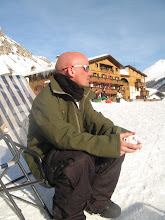Louis VM's writes
This is the story of someone who had to spend one and a half hours writing about the trip in Normandy. Normandy is a place for people who are very interested in history because it is one of the many deeply historic sites across Europe. Some of the many places that are of deep interest to those history lovers are “The American War Cemetery”. This cemetery consists of just under ten-thousand dead American soldiers who gave their lives for all of us today. As well as Christians buried there, there were also Jews buried in the cemetery with the sign of the star above them. This American War Cemetery is situated on Omaha and it was this beach that suffered the most loss to the Allies where they lost ten-thousand soldiers made up of Americans and the English.
Another site that is of historic evidence is the batterie guns that are situated along the whole of the coast of Normandy and these guns could shoot to an almighty distance of 12 miles out to sea. Unfortunately these guns belonged to the German forces so it made it very difficult for the Allies to reach the French coast because at least half of the Ally forces were wiped out even before they reached land. These battery guns were really one of main strength of the German Army. But eventually the Allied forces did manage to break though the German forces and capture more than half of the battery guns and the English did this through countless and relentless charges at the German lines







